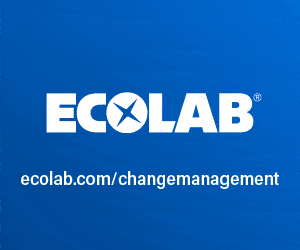Sealed Air’s Diversey Care division has released the first of a series of studies conducted with Purdue University, which focus on the bactericidal efficacy of disinfectants.
The research, expected to be published in the August 2017 issue of the American Journal of Infection Control (AJIC), determined that the three tested disinfectants were significantly less bactericidal at lower than label use contact times and concentrations.
“In busy healthcare facilities, disinfectants are often applied once and left to dry, regardless of the unique label instructions. As this study shows, disinfectants don’t live up to their claims if they get over diluted or are not reapplied as directed,” said Peter Teska, Infection Prevention Application Expert, Diversey Care.
“Choosing an Environmental Protection Agency-registered disinfectant and following label directions are key elements of effective disinfection and preventing the spread of healthcare-associated infections.”
Accelerated hydrogen peroxide (AHP), quaternary ammonium compounds (Quats) and sodium hypochlorite were each tested on stainless steel surfaces at room temperature (77°F) using EPA procedure MB-25-02. For each treatment, bacterial reduction was calculated, compared and analysed to find the following key results:
- All disinfectants were significantly less bactericidal against S. aureus when applied for times shorter than label contact times. A one-minute contact time with AHP resulted in a 56.8% reduction compared with 100% at the recommended 5-minute contact time. At contact times of 1, 2, 3 and 4 minutes, Quats resulted in 15.7%, 47.4%, 62.5% and 70.0 % reduction compared with 100% at the 10-minute label contact time. Sodium hypochlorite applied for 1 minute resulted in a 76.3% reduction compared with 100 % at the 5-minute label contact time.
- All disinfectants were significantly less bactericidal against S. aureus at lower than label concentrations. AHP at 25% and 50% label concentrations resulted in 40.9% and 75.7% reductions. Quats at 25% and 50% label concentrations resulted in 62.5% and 67.5% reductions and Sodium hypochlorite at 25% label concentration resulted in 50.7% reduction.
- The bactericidal efficacy of the sodium hypochlorite disinfectant was most tolerant to decreases in concentration and contact time. AHP followed close behind while the Quat disinfectant was the least tolerant and most affected by contact time and concentration.
“Understanding the antimicrobial efficacy of disinfectants under different conditions offers healthcare facilities valuable information on disinfection limits, opportunities and corrective actions,” said Haley F. Oliver, Associate Professor, Department of Food Science, Purdue University.
For more information about infection prevention products from Diversey Care, visit Diversey Care infection prevention section of the website.




